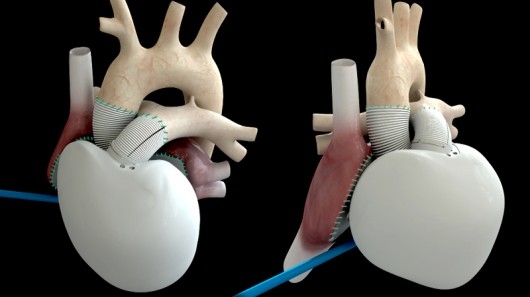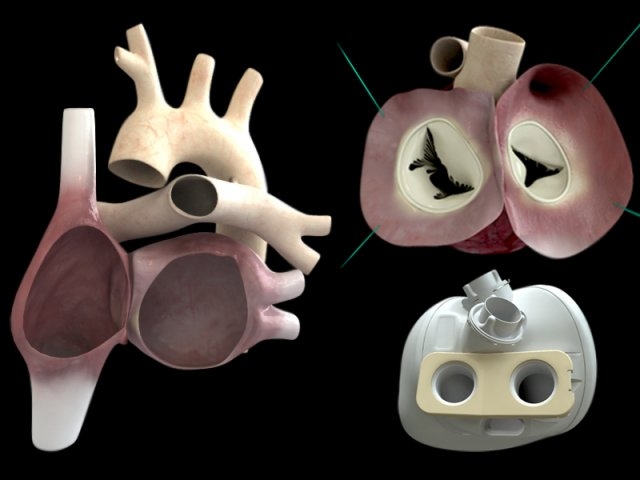
The level of medical care in the world today is rapidly increasing. More and more medical programs have added high-tech elements (such as technology-assisted methods including hip replacement and hearing aids). The artificial heart area is also a difficult task that many scientists and doctors are trying to overcome.
The French company Carmat has been focusing on the artificial heart area for 15 years. The artificial heart it creates can completely replace the human heart and save those with advanced heart disease and those who have not lived for two weeks.
Recently, Carmat announced the creation of a second personal heart-making product, which is expected to be born in 2017 and is intended to be approved by European authorities. Unlike other artificial hearts, Carmat builds a permanent artificial heart, saves those with advanced heart disease, and directly replaces the already heart failure heart, rather than as a heart bypass device to assist the patient's next heart transplant.
How does an artificial heart work?The structure of the artificial heart that Carmat designed is like this: A membrane separates two atria, allowing hydraulic fluid (blood) to flow to one side. A motor pump removes the hydraulic fluid from the atrium and the fluid moves the membrane so that blood can flow from the other side of the atrium.

The Carmat heart uses a valve made from the heart tissue of the cow and has sensors to monitor changes in blood pressure. The sensor can send information to the internal control system and adjust the blood flow rate.
Carmat's artificial heart was developed from biological materials. It does not require transplant recipients to take immunosuppressive drugs and is able to imitate the heart's original heart operation with the most "loyalty". Unlike previous short-term ventricular assist pumps, Carmat's artificial heart is dedicated to "settling" patients. Only the battery that powers the heart is outside the body and its "endurance" is up to 2 hours.
Standing on the shoulders of martyrsSo far, Carmat's artificial heart has undergone four surgical transplants.
In December 2013, Claude Dani, the first critically ill person at the age of 76, received an artificial heart transplant in Carmat in Paris. This is also the first artificial heart transplant in the world. According to media reports, at that time, the patient had been able to eat himself within two months after surgery, and did not need continuous breathing assistance. 75 days later, the patient died.

On August 5, 2014, the second patient received Carmart's artificial heart transplant surgery. The 68-year-old patient was discharged from the hospital in early January 2015 and has since been living normally. He is equipped with an external portable device that powers the artificial heart. In May 2015, the patient passed away.
Carmat analysts said:
The reason why these two patients died is because of confusion in the electronic engine control of the artificial heart.
The third patient who received Carmart's artificial heart died nine months after surgery and stopped breathing due to kidney failure. The patient also suffers from a variety of diseases, and renal disease has spread to the vicinity of the artificial heart. It is reported that after the patient died, his artificial heart was still beating.
The fourth patient died of preoperative and postoperative medical conditions.
Although these four patients who completed the first clinical trials have passed away, they are of great significance to the development of artificial hearts. Medical experts have gained experience in patient selection, postoperative observation and care, and problem prevention. In the announcement, the hospital also paid tribute to the courage of the deceased patient who volunteered to undergo artificial heart transplant surgery. Now, the company aims to expand the permanent artificial heart transplant surgery to 25 cases through the certification authority of European authorities, complete the second batch of clinical trials, and popularize the transplant experience.
Carmat CEO Marcello Conviti said:
Our goal is to submit all statistics in 2017 and to obtain product certification in some countries in early 2018 for the benefit of more human beings.
The future is still roadblocked and longObviously, we still have a long way to go to use a smartphone-controlled permanent artificial heart, but according to the International Financial Times, expert Zoltan Istvan predicts that we will see this in the future:
The artificial heart is able to connect to WiFi, and when you need intense exercise, it can speed up through the smartphone; when you need to rest, it can slow down the beat rate through your smartphone.
However, he also added:
Future artificial hearts may also be at risk of being hacked.
Although we do not have any evidence that the artificial heart can be attacked by hackers, this is not a worry. In 2014, former US Vice President Dick Cheney stated that his doctor stopped the function of the wireless heart transplant because he feared that the hackers would assassinate the president by attacking the artificial heart. Other studies have also stated that medical devices such as insulin pumps are very vulnerable to security holes.
Therefore, we still have a long way to go to make the permanent robot heart truly benefit mankind.
Via:Readwrite
Our company offers rubber, and specialty seal and o-ring for molding electronic and electrical Connectors, both circular and rectangular types. We have in house capabilities and quick turn around.
Cable Grommets with various Grommet Shapes, Rib Styles, Slot Shapes, Inner Flanges, and Colors - To have access to our 3D Cable Grommet Design Tool
Silicone Rubber Products,Cable Silicone O-Ring,Rubber Seal,Custom Silicone Seal,Waterproofing O-Ring,Tpe Grommet
ETOP WIREHARNESS LIMITED , http://www.oemwireharness.com
